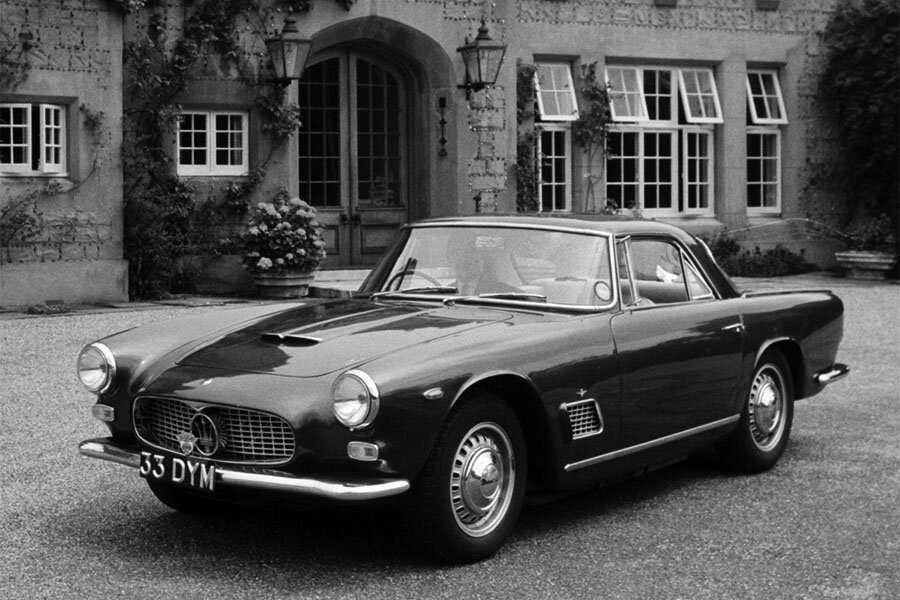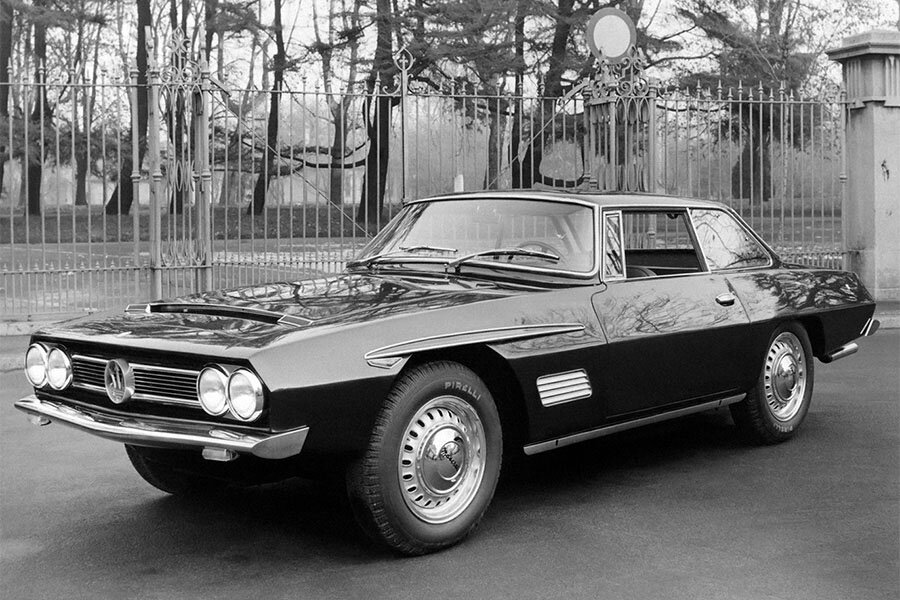Guide: Maserati 3500 GTI LWB - a Historical & Technical Appraisal
/BACKGROUND
Since entering production in late 1957, the Maserati 3500 GT had proven a commercial hit. In little over three years, around 900 had been completed, making it one of the most successful high end Gran Turismos of the era.
The 3500 GT offered handsome looks, a high specification and impressive performance. A pair of rear seats also made it a practical proposition which no doubt further helped sales.
The 3500 GT’s success did not go unnoticed over at Ferrari. In 1960, the Maranello firm started to build their own four-seat model. The resultant 250 GTE went onto become an equally prolific seller.
To keep the 3500 GT at the top of its division, Maserati added disc brakes and a limited-slip differential to the specification in 1959.
The most radical change then came in early 1961, when a comprehensively revamped version went into production. The new 3500 GTI featured a host of cosmetic updates, but most significantly, it came with a torquier, more powerful fuel-injected engine and a five-speed gearbox.
Unveiled as a prototype at the Geneva Motor Show in March 1960, GTI deliveries started around twelve months later.
It was the first Italian production car equipped with fuel-injection, however, the system had already proven itself on the pioneering Mercedes-Benz W198 300 SL Gullwing launched in 1955.
Mercedes-Benz had first used Bosch fuel-injection on their all-conquering W196 Formula 1 cars of 1954. In 1956, Maserati followed suit and built an experimental 250F Grand Prix engine with Bosch injection (plus desmodromic valve gear).
For the 3500 GTI, they adopted a Lucas injection system made in England.
ENGINE / TRANSMISSION
As before, Maserati’s chain-driven dual overhead camshaft straight six had a block, head and ribbed sump manufactured in aluminium alloy. It also featured hemispherical combustion chambers, domed pistons, a seven-bearing crankshaft and wet-sump lubrication.
Displacement was unchanged at 3485cc thanks to a bore and stroke of 86mm and 100mm respectively.
The compression ratio stayed at 8.2:1.
Ignition was via two Marelli distributors and twin spark plugs per cylinder.
The 3500’s engine was derived from the high compression dry-sump unit found in the 350 S racing car.
The original carb-fed production motor had an output of 220bhp at 5500rpm and 224lb-ft at 4500rpm.
For the 3500 GTI, this rose to 235bhp at 5500rpm and 260lb-ft at 4000rpm.
Not only was the 3500 GTI quieter and smoother, it also benefited from reduced tickover and improved throttle response.
Performance was further improved by the addition of a new five-speed ZF gearbox. Borg & Beck once again supplied the single dry-plate clutch and a limited-slip differential was standard.
CHASSIS
All 3500 GTIs were built on the ‘Orsi’ welded tubular steel chassis that had replaced the original ‘Colombo’ unit in mid 1959.
It featured a wheelbase of 2600mm and independent front suspension via coil sprung double wishbones. At the back was a rigid Salisbury axle with semi-elliptical leaf springs and a longitudinal torque arm. Hydraulic telescopic shock absorbers were fitted all round along with anti-roll bars at either end.
Brakes were supplied by Girling. Discs were used at the front and drums at the rear.
16 x 6.5-inch wheels were manufactured by Borrani and normally shod with Pirelli Cinturato tyres.
An 80-litre fuel tank was located in the boot floor ahead of the spare wheel.
BODYWORK
As the original 3500 GT was one of the best looking automobiles of its era, no wholesale changes were deemed necessary.
Designed by Carrozzeria Touring, both the 3500 GT and GTI were manufactured using Touring’s patented Superleggera process. This comprised a structural framework of small diameter steel tubes that conformed to the body shape which was then covered by an aluminium outer skin.
Although at first glance the 3500 GT and GTI appeared almost identical, myriad detail alterations were made.
The front spot lamps were deleted and rectangular indicators replaced the circular originals.
A slimmer chrome front grille surround was installed along with rear window quarterlights.
Tail light shrouds were enlarged and fitted with three separate lights instead of single-piece clusters.
Single exhaust pipes now exited from each side as opposed to a twin exhaust on the left.
Mounted on the bootlid was new ‘Maserati 3500 GTI’ and ‘Iniezone’ script along with a trident logo.
INTERIOR
By contrast, the luxuriously equipped interior remained practically unchanged.
Leather was used to upholster the well-padded seats, gear gaiter, door panels and rear quarters including the parcel shelf.
The dash was home to an array of Jaeger instrumentation and was typically painted to match the body colour. Gauges for water temperature, fuel level and oil pressure were located between the primary speedometer and rev counter. An array of toggle switches and warning lights scattered elsewhere.
The dash top was usually upholstered in black vinyl along with the distinctive grab handle that dominated the passenger side of the fascia.
Carpet was used to upholster the floor, sills and transmission tunnel while the boot was trimmed in quilted vinyl.
Electric windows, a radio and electric antenna were standard equipment.
OPTIONS
Buyers could optionally enhance their cars with contrasting seat piping, a two-tone roof, lowered seats for extra headroom and extended leather surfaces.
WEIGHT / PERFORMANCE
Weight was unchanged at 1420kg, but with the extra power on tap, performance improved.
Top speed rose to 145mph and 0-62mph dropped to around seven seconds.
The extra torque provided by the fuel-injected motor also gave better all-round flexibility that was not reflected in the headline performance figures.
PRODUCTION BEGINS
After the prototype 3500 GTI was unveiled, Maserati embarked on a rigorous twelve-month development programme.
Production started in early 1961. For a few weeks, there was some crossover of GTs and GTIs while old bodies and engines were used up.
PRODUCTION CHANGES
In 1962, rear disc brakes became standard.
END OF PRODUCTION
Production continued until late 1964.
The last 3500 GTI was built on chassis 2858.
Around 500 3500 GTIs were completed with the standard Touring coachwork.
SPECIAL BODIES
Four 3500 GTIs were built with special coachwork: two by Frua and two by Boneschi.
Frua’s efforts were on chassis 2200 and 2242. These cars had the same general profile as the pair of carb-fed 3500 GTs the firm produced. Most notably, chassis 2200 was completed with rectangular headlights whereas 2242 stuck with the tried and tested circular lights.
A brace of 3500 GTIs were also bodied by Boneschi, both of which were along broadly similar lines to one another. The first (chassis 2500) was unveiled at the Turin Motor Show in October 1962 and the second (chassis 2724) was presented at the Geneva Motor Show in March 1963. They incorporated Boneschi’s trademark four-headlight front-end styling and sharply creased lines that were several years ahead of their time.
Text copyright: Supercar Nostalgia
Photo copyright: Maserati - https://maserati.com

































